In today’s digital age, where smart devices, vehicle infotainment systems, and cloud services play a crucial role in our daily lives, the need for user-friendly, multi-language manuals have never been greater. Hansem Global, a leader in multilingual content development, offers an innovative solution through its TransEZ platform, designed to create efficient and consistent web manuals that enhance user experience across various devices.
The Growing Importance of Web Manuals in the Digital Era
In today’s digital age, where smart devices have become deeply embedded in our daily lives, these devices offer increasingly diverse and complex capabilities. However, no matter how advanced the technology, its value diminishes if users cannot easily access and understand it. This is why the demand for and importance of web manuals are steadily growing. Web manuals provide real-time updates and convenient accessibility, allowing users to efficiently find the information they need, whenever and wherever they need it. Consequently, web manuals have evolved beyond traditional instruction guides to become essential tools that enhance the user experience in our digital era.
Hansem Global’s Publishing Solution: TransEZ
Hansem Global introduces an innovative approach to multilingual support for web and PDF manuals across various industries through its proprietary OSMU (One Source Multi Use) solution, TransEZ. This solution enables multi-publishing from a single source of data, providing a streamlined process for producing manuals in multiple languages.
TransEZ supports not only smart devices but also vehicle infotainment systems (IVI) and cloud-based PaaS (Platform as a Service). It publishes data-driven web manuals that are designed to maximize user experience.
Explore this article to discover the strengths and innovations of Hansem Global’s solution.
Data-Centric Approach: Enhancing Efficiency and Quality
At the core of TransEZ is a robust data-driven methodology that transforms Adobe InDesign content into a standardized XML format, known as IDML (InDesign Markup Language). This format is then converted into HTML, making the content accessible across various devices. The XML-based structure ensures that the data is organized and semantically meaningful, allowing for consistent quality and simplified user interactions, even with complex technical documents.
Structuring Content: The Importance of Semantics and Hierarchy
Creating an effective web manual requires a clear definition of content semantics and hierarchy. Hansem Global employs standardized processes to manage content meaning and structure, ensuring that users can easily find the information they need.
By applying the following methods, Hansem Global ensures that web manuals are expressed as logical and structured data:
Semantics: To clearly define the meaning of the content, meticulous management and rules were applied even in the naming of styles. This approach ensures that text elements and styles serve a meaningful role within the data structure, beyond mere visual purposes. For example, styles for headings, subheadings, and body text are configured to convey the corresponding content’s hierarchy and meaning effectively.
Hierarchy: To clarify the hierarchical structure of the document, content is consistently written and managed. During this process, the style names in InDesign and the class names in HTML templates maintain consistency, ensuring that each element is designed with consideration for its placement and function. This consistency allows the converted HTML to be expressed as logical and structured data.
Standardization of DTP Workflow: To ensure that various workers follow the same principles, the DTP (Desktop Publishing) workflow was standardized. This standardization was essential for maintaining consistency during the conversion process and maximizing efficiency by ensuring that all documents are created under the same guidelines.
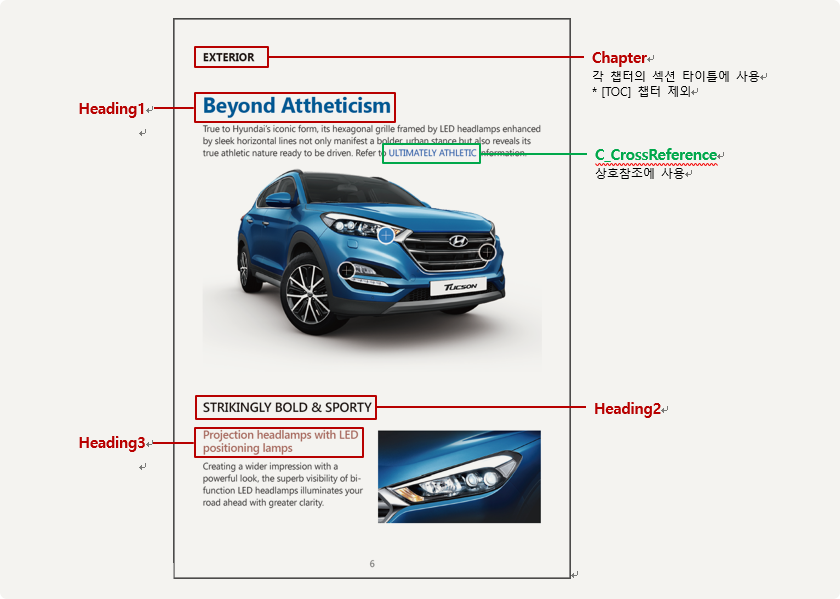
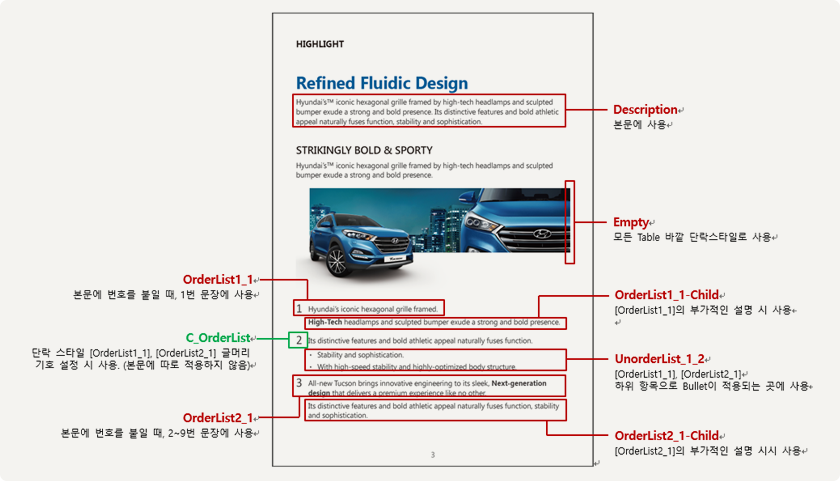
The Role of Metadata: Enhancing User Experience
Metadata plays a critical role in improving information accessibility and searchability in web manuals. Unlike traditional PDF formats, which often lack user-friendly features such as UI text, icons, and interactive tables of contents, Hansem Global’s web manuals incorporate metadata to address these shortcomings. Key metadata elements include:
UI Text: Structuring all user-facing text elements, such as menus and buttons, to ensure consistency across devices.
UI Icons: Defining icons and text labels to maintain consistent design across platforms.
Table of Contents: Providing linked content for easy navigation within the manual.
Search Database: Including metadata for each section and keyword, enabling fast and accurate searches.
These enhancements ensure that web manuals are not only informative but also intuitive and responsive to user needs, regardless of the device or platform.
The required metadata can vary depending on the type of device or the scope of the project. For instance, certain smart devices or car infotainment systems may require customized UIs or functions based on user behavior patterns, necessitating the inclusion of specialized metadata.
Hansem Global has established and operates a standardized process to ensure that all necessary metadata is accurately applied during HTML conversion. This process includes the automatic linking of metadata to content converted from InDesign, resulting in consistently high-quality web manuals. Additionally, we are flexible in incorporating additional metadata to meet specific project requirements when needed.
The importance of metadata cannot be overlooked when converting a manual created in InDesign into a successful web manual. Hansem Global’s solution ensures that this metadata is systematically applied during the HTML conversion process, guaranteeing that the final product meets user expectations. This approach is a key factor in ensuring that manuals are effectively utilized across various devices and platforms.
Evolution of UX Design in Web Manuals
User experience (UX) design has seen significant advancements, particularly in the realm of web manuals. Hansem Global has been at the forefront of this evolution, adapting its UX designs to meet changing user demands and device formats. Over the past decade, Hansem Global has refined its approach to responsive web manuals, ensuring that they are not only visually appealing but also highly functional.
Early Web Manual UX: Simplicity as a Starting Point
The first web manual templates were very simple. Icons representing each chapter were placed next to the chapter titles, making it easy for users to navigate the content. Although the design was minimalistic, it was an early attempt to enhance user experience by enabling quick access to essential information.
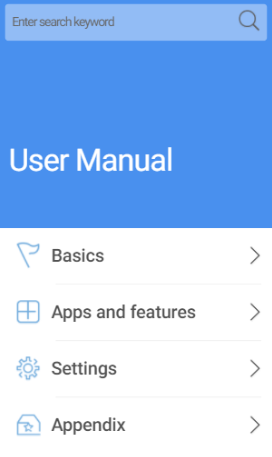
Progress in UX: Table of Contents with List and Tile Formats
Over time, the method of presenting the table of contents evolved to meet the diverse needs of users. In addition to the traditional simple list format, a tile format was introduced, allowing users to select the information they need more intuitively. This development enhanced both the visual appeal and navigational efficiency of web manuals.
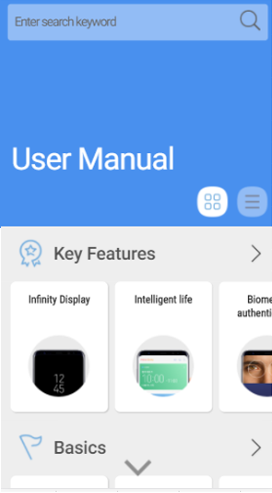
Expanding UX to Adapt to Changing Devices
As devices evolve, particularly with the introduction of foldable devices that support various screen sizes, UX design has also advanced. To enhance usability on larger screens, a table of contents expansion feature has been added, allowing users to navigate information more conveniently and access more content and functions at a glance. These improvements have become a significant example of responsive web design, marking the current stage in the evolution of web manual UX.
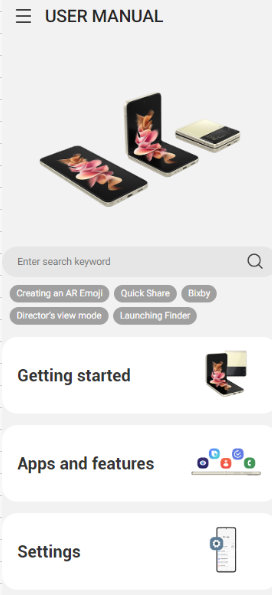
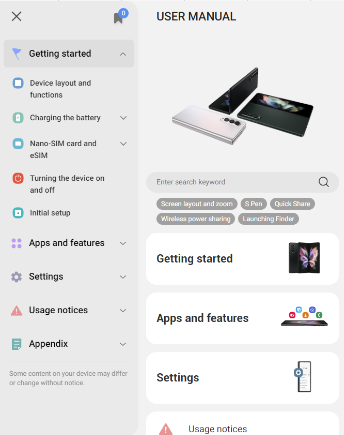
Advancing Search Functionality: Addition of Keyword Suggestions and Recommendations
The search functionality has significantly evolved. Initially, it was limited to simple keyword entry, but now it offers related keyword suggestions, recommended searches, and recent search history based on the user’s input. This enhancement allows for faster and more accurate access to information, making it easier for users to find what they need and leading to a substantial improvement in UX.
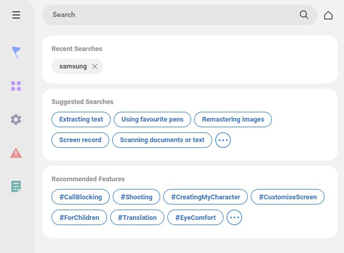
Aligning with Modern Needs: Hansem Global’s User-Centric Approach
At Hansem Global, we prioritize publishing user manuals in multiple formats that align with the needs of the modern era, with a strong focus on user convenience. Our solutions are designed to meet the demands of today’s users, ensuring that web manuals are both accessible and effective. If you have any questions or would like more information about our web manual solutions, please feel free to reach out to Hansem Global.






